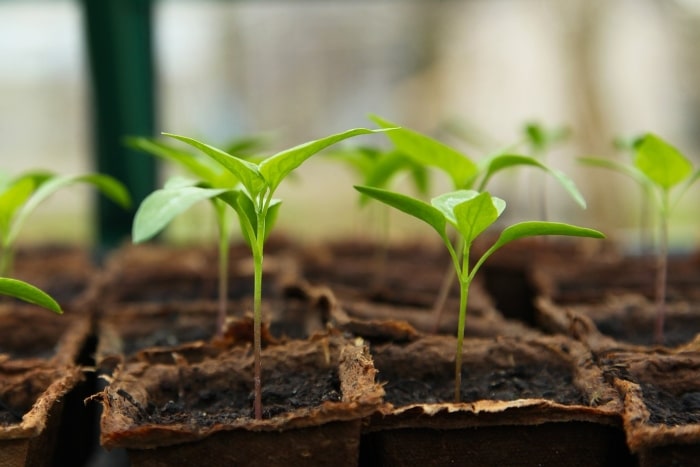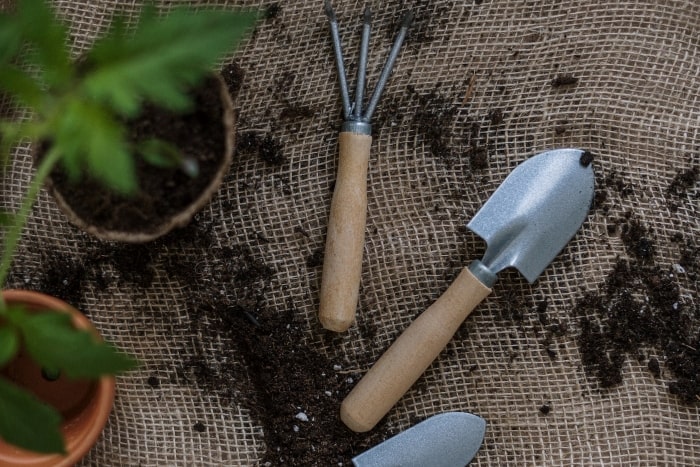Looking to start growing some fresh veggies? Start a little garden of your own?
Starting an edible garden, no matter how small, is the first step in growing your own food and incorporating more nutritious, fresh foods in your diet. It truly is one of the best things you can do for your health (physical and mental) and overall wellbeing.
This guide will walk you through some basic steps, instructions, and tips to help you get started with gardening and growing food!
Some of the general aspects of gardening – specifically gardening as a means of growing your own food – include:
- Building soil
- Sowing seeds
- Transplanting
- Tending to crops
- Deterring pests
- Harvesting
I have more in-depth posts on these individual topics, but before you dive into each of those, start with this post, which focuses on what you need to go about getting your garden started, whatever that looks like for you.
Let’s start with the basic information you should have in mind when planning your garden.
First off, if you want to grow plants, there are certain essentials.
What Plants Need:
- Sun
- Water
- Food
Sunlight is necessary for plants to undergo the process of photosynthesis. In a nutshell, photosynthesis is how plants turn sunlight, water, and carbon dioxide into oxygen and sugars – which are used as energy/food for the plant. Hence, without sun, a plant cannot grow.
Water is necessary for photosynthesis, as well as many other functions in a plant, from seed germination, to uptake and transport of nutrients in the plant.
Food for a plant looks like certain nutrients that are obtained through the soil or by photosynthesis, especially nitrogen, phosphorous, and potassium. This is why it is important to grow plants in healthy soil and even fertilize with organic amendments if needed.
Now, with these basic essentials in mind, an important part of gardening is planning where your plants need to go and how to give them the best environment to grow in. For example, some plants need more shade than other, some plants are heavier feeders (especially when talking about food crops), some plants need more or less space, some are more susceptible to pests and disease, etc.
A garden can be as simple as some pots on your balcony, or as complex as a food forest ecosystem. It all depends on what you want and are able to accommodate.
Some Things to Consider When Planning a Garden:
- How much space do you have?
- What do you want to grow?
- How much space do the things you want to grow need?
- What kinds of things can you grow in your growing zone/season?
- How much sun/rain/etc do you get?
All of these considerations will factor into what type of garden you are able to build.
Types of Gardens:
Some different types of gardens and gardening methods include:
- market garden
- potager garden
- permaculture gardening
- hugelkultur garden beds
- lasagna garden beds
- no dig/no till
When just getting started, it’s not too important to know exactly what type of garden you want to establish. Just start with the basic growing practices described below. However, following certain good practices can make gardening more effective and efficient.
For example, even in my small backyard garden, I like to always follow basic permaculture principles – this ensures that your garden is as healthy as possible by mimicking and maximizing on the way nature works.
How to Start a Garden – Step-by-Step:

Planning/Research:
1. Assess your space – how much space, how much sun, etc.
2. Decide what you want to (and can) grow – look up your zone, sun requirements, time until harvest, recommended planting dates, etc.
3. Plan your space – depends on how much space you have, how much space each plant needs, how much sun you get, plant compatibility (some plants get along, others do not!).
Prepping:
4. If starting from seed, this needs to be done far in advance of the growing season.
5. If using transplants, buy them at the right time of year to get them in the ground after last frost.
6. Get some form of organic compost going, if possible.
7. Prep your garden beds or pots/planters with quality soil amended with organic compost.
Gardening/Planting:
8. After last frost, and according to recommended planting dates, plant your transplants in their designated locations in your garden, according to their requirements determined in the planning phase.
9. Mulch to prevent soil from drying out.
10. Water plants regularly, according to their needs.
11. Amend soil, as needed, according to plant needs.
Harvesting:
12. Reap the fruits of your labour! Harvesting frequently often helps produce more crops. Succession planting can be done with fast growing crops.
I hope this post provides some framework for getting started with growing your own food! Stay tuned for many more in-depth articles on each of the steps listed above.
Feel free to drop any questions and comments below! I’d love to hear about your gardening and food-growing experiences!

